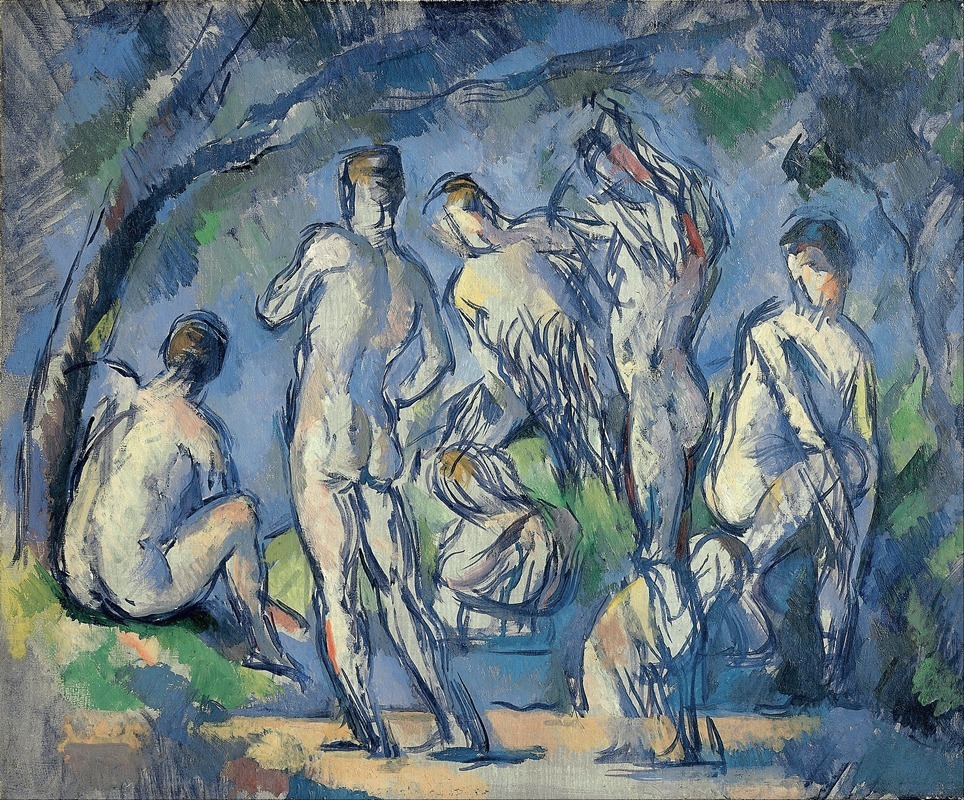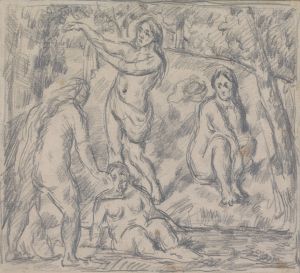
Seven Bathers
A hand-painted replica of Paul Cézanne’s masterpiece Seven Bathers, meticulously crafted by professional artists to capture the true essence of the original. Each piece is created with museum-quality canvas and rare mineral pigments, carefully painted by experienced artists with delicate brushstrokes and rich, layered colors to perfectly recreate the texture of the original artwork. Unlike machine-printed reproductions, this hand-painted version brings the painting to life, infused with the artist’s emotions and skill in every stroke. Whether for personal collection or home decoration, it instantly elevates the artistic atmosphere of any space.
Paul Cézanne's Seven Bathers is a painting that reflects the artist's enduring interest in the theme of bathers, a subject he explored repeatedly throughout his career. Cézanne, often regarded as a pivotal figure in the transition from 19th-century Impressionism to 20th-century modernism, used the motif of bathers to experiment with form, composition, and color. This particular work is one of several in which Cézanne depicted groups of nude figures in natural settings, emphasizing the harmony between the human body and the landscape.
Seven Bathers exemplifies Cézanne's distinctive approach to painting, characterized by his use of geometric forms and his focus on the underlying structure of objects and figures. The painting features seven nude figures arranged in a natural environment, with trees and possibly water suggested in the background. Rather than aiming for anatomical precision or realistic detail, Cézanne simplified the human form into shapes and planes, creating a sense of timelessness and universality. His use of color is also notable, with subtle gradations and contrasts that enhance the sense of depth and volume.
The theme of bathers was significant in Cézanne's oeuvre, as it allowed him to explore the relationship between the human figure and the surrounding space. This focus on spatial relationships and the interplay of forms was a precursor to the developments of Cubism and other modern art movements. Cézanne's bathers, including those in Seven Bathers, are often seen as a bridge between the classical traditions of figure painting and the innovations of modern art.
The exact date of Seven Bathers is not definitively established, but it is generally associated with Cézanne's later period, when he increasingly concentrated on monumental compositions and a more abstract approach to form. The painting is part of a broader series of works on the bather theme, which includes both smaller studies and larger, more complex compositions such as The Large Bathers.
As with many of Cézanne's works, Seven Bathers has been interpreted as a meditation on the relationship between humanity and nature, as well as an exploration of the formal possibilities of painting. The work is held in high regard for its innovative approach and its influence on subsequent generations of artists.
Further details about the painting's provenance, current location, or specific historical context are not readily available.


















